Last month, my husband and I spent a couple of weeks visiting family in Finland and Germany. The historical site we were both most excited to see was Turku Castle, in southwest Finland.
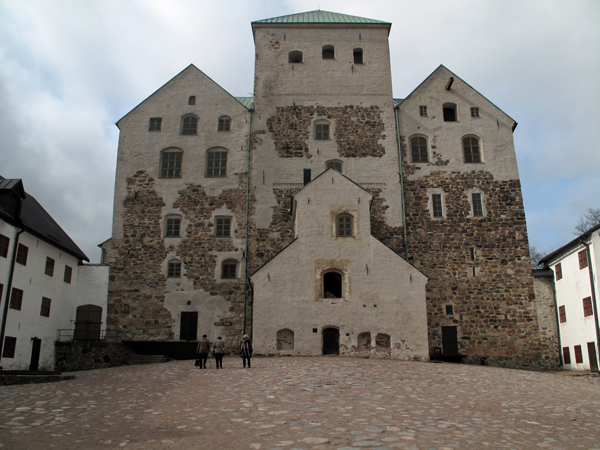
Turku was the capital of Finland until 1812, when Alexander I, thinking Turku was a little too close to Sweden and too far from Russia, gave Helsinki capital city status instead.
However, the castle itself is much older than all that – construction began in the 1280s, when Finland was under Swedish rule.
In its time, the castle went through many renovations. It started its shift from military stronghold to residential palace in the 16th century, when King Gustav I of Sweden/Gustav Vasa took the throne. According to the castle guidebook:
The windows were filled with panes of parchment, the fireplaces were worn out and the rooms were gloomy.
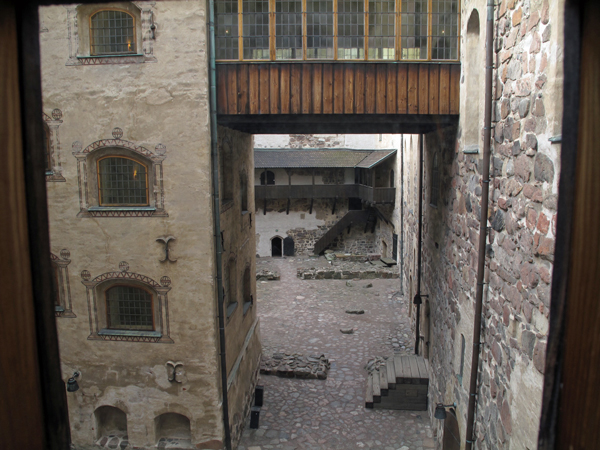
Turku Castle underwent a period of major renovation, including updates like replacing drawbridges and gangways with staircase towers, and salons for the Duke and Duchess. Unfortunately, the castle didn’t have a great life after that. A 1614 fire nearly destroyed the wooden structures of the main building, and the castle was hit by a bomb on the first day of the Continuation War in 1941. In between all that, the castle was used as a prison, a garrison, and – the ultimate in boring – a storehouse. Poor Turku Castle.
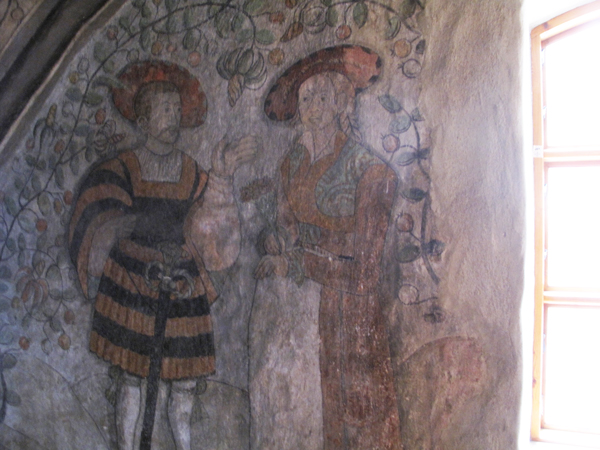
Thankfully, plans to restore the castle had been in the works for some time, and another major period of renovation kicked off – one that lasted for 47 years!
It’s a big building, almost maze-like with its alcoves, narrow hallways, and staircases.
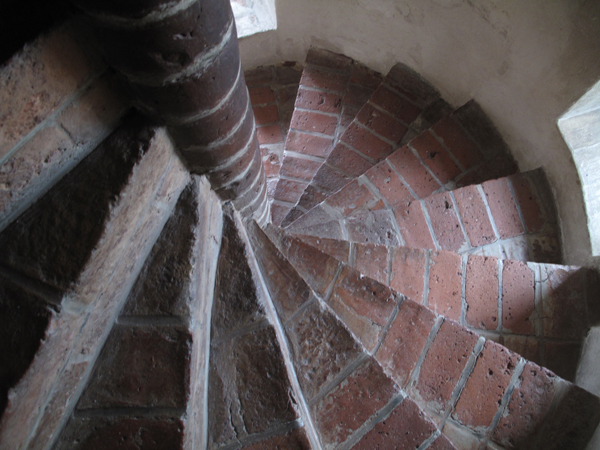
Including this one, built in a spiral formation so that any right-handed would-be assailant coming up couldn’t draw his sword. Crafty.
There were many large and airy rooms (some too big to feel like a mere “room”), and some that were more modest.
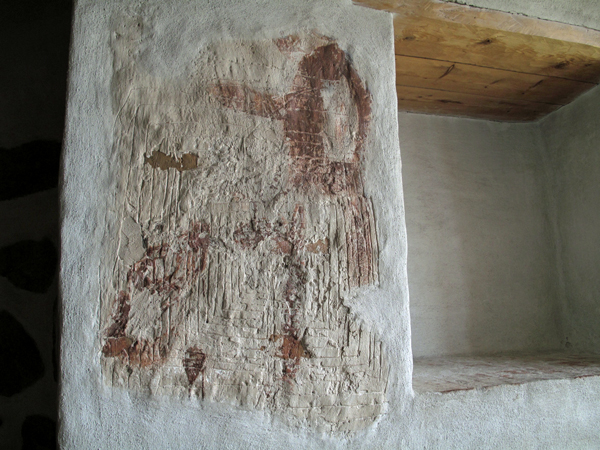
One of my favourite rooms was the Ladies’ Parlour, featuring this labyrinth carved into the wall. The labyrinth was believed to trap evil spirits and keep them from getting into the room.
I think, though, my absolute favourite room was the Scriptorium, the workroom used by the castle’s scribe. Important visitors’ names were recorded on the walls.
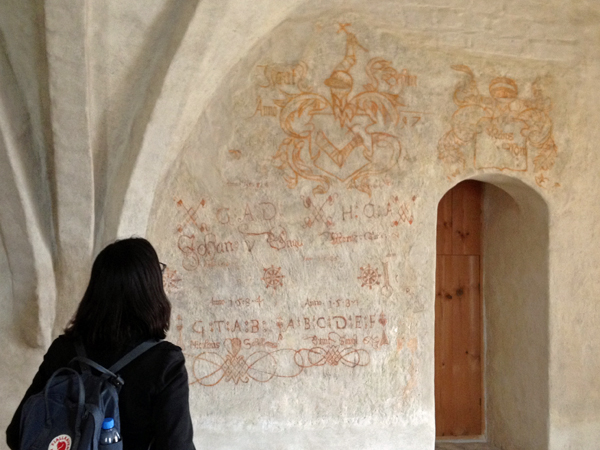
Here I am gazing lovingly at the wall. I was like that for quite a while! I didn’t even notice my husband moving on after he took this photo.
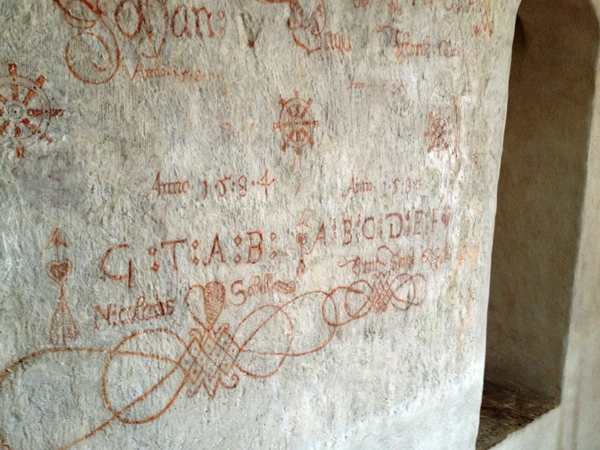
And a photo from my perspective. I’ve recently taken up calligraphy, so I enjoyed seeing the work and figuring out how certain letters were formed.
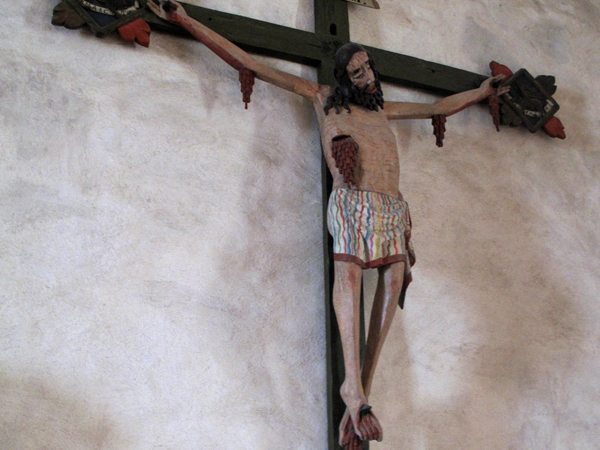
The Nun’s Chapel featured this incredible crucifix from Hammarland church. From the fact sheet in the room:
The carving … is from the late 14th century, when the mystery of the blood became stronger because of the unsettled times and the epidemics of plague.
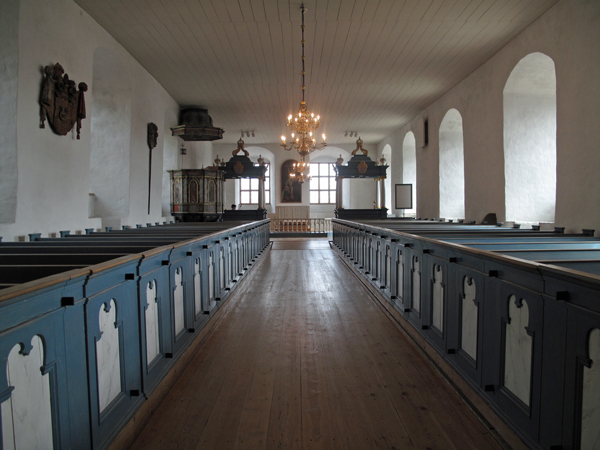
The Castle Church is still alive and kicking, and many couples get married here.
The King’s Hall and Queen’s Chamber can also be rented out for events, and the walls are lined with beautiful tapestries that are very difficult to resist touching!
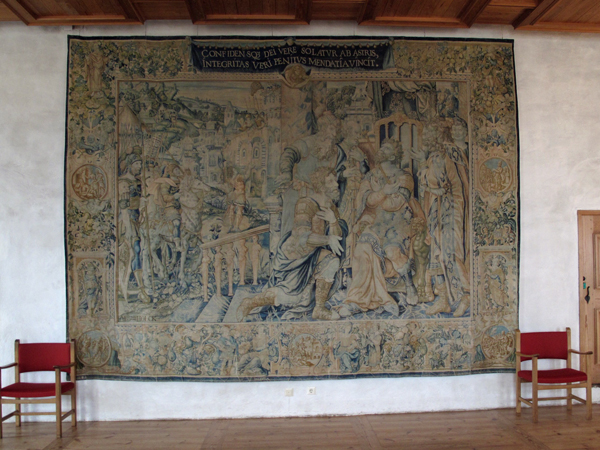
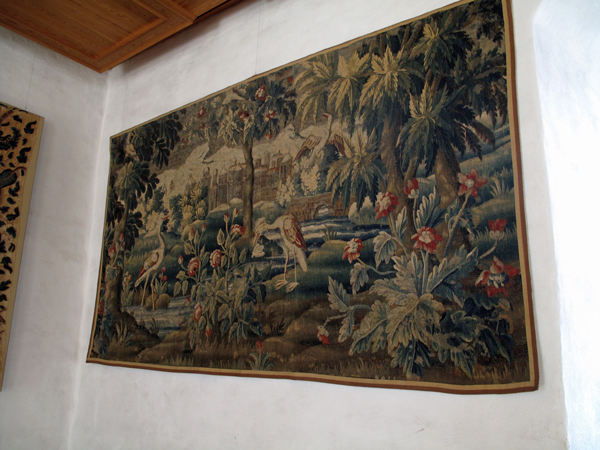
So, to sum up, Turku Castle gets two very enthusiastic thumbs up from me. As someone of Finnish descent who has lived her whole life in Canada, it was invigorating for me to get so close to a sizeable slice of Finnish history. I enjoyed Turku a lot anyway, but the castle was a definite top three highlight for me. Check it out if you’re ever in that part of the world and can’t say no to a good castle!
